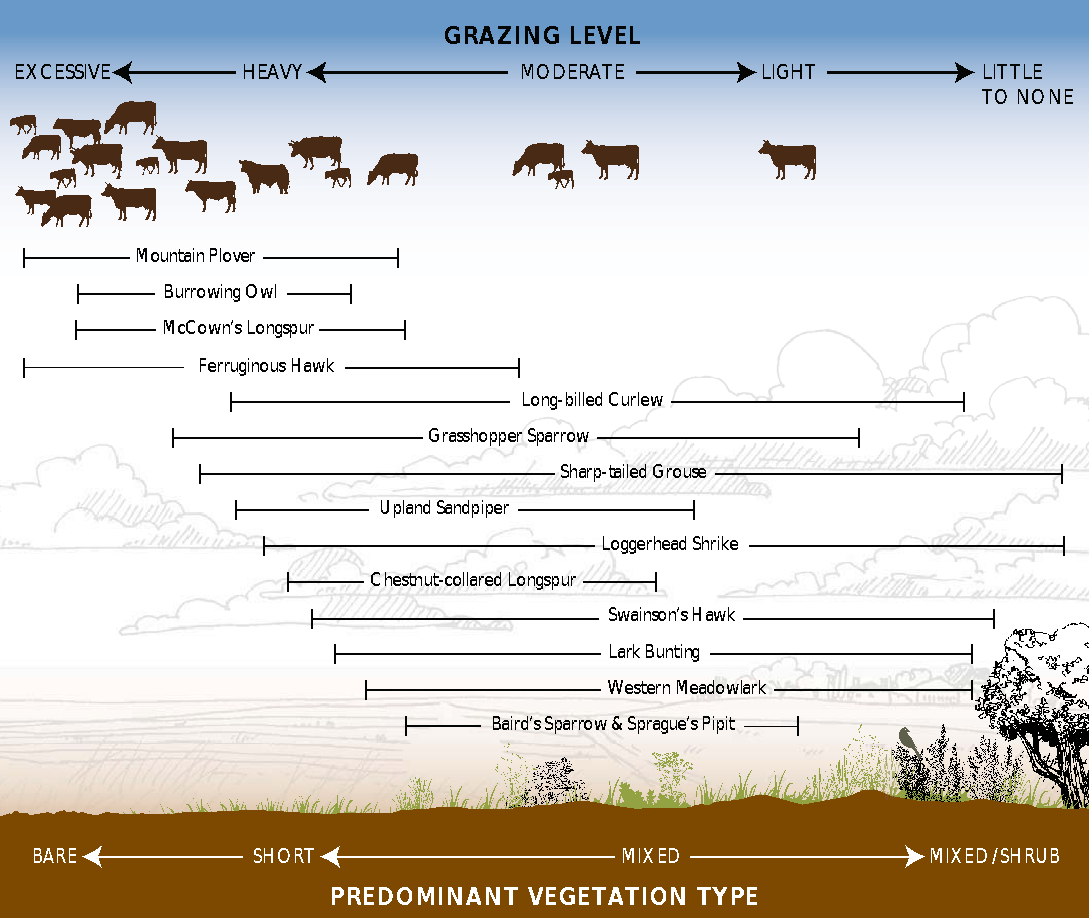Beef & Birds: Why Do They Matter?
At RLCB, we talk a lot about ecosystems and our responsibility to steward them well. As we kick off grill season, we are inviting you to join us in doing our part to take care of the natural wildlife and grasslands that sustain our world.
In May and June, RLCB is excited to give back to our friends at the Bird Conservancy of the Rockies. The gambit is that we will donate $15 from every Grill Box sold to the Bird Conservancy. That means our guilt-free beef, just got even less guilty, because now you can nourish your body while also supporting bird conservation.
I call the donation a gambit because it is just there to catch your eye. Our deeper purpose is to help you understand how our beef production is regenerative for bird habitat and how the Bird Conservancy partners with ranchers to renew and conserve bird habitat.
We want that $15 to feel good in your bones and for you to have a deep understanding that eating our beef is good for you and good for our world.
That deeper understanding requires a dive into how cattle and birds interact in grasslands, so grab your snorkel.
So how do cattle help birds?
Our cattle play a role in creating “vegetation structure” for our feathered friends, which is the height and density of plants and plant litter. Long pasture recovery periods of 8 months to 2 years create a “patchwork” of pastures varying in grass height from short stubble to mature grass. Our pastures are 300 – 500 acres so this structure is on a scale of ½ mile to a mile - that’s a big quilt. Our cattle are also selective about which grass they eat in a pasture, depending on the season. This creates a mosaic of taller grass patches juxtaposed with shorter patches on a scale of 10’s or 100’s of yards.
Why does this matter? It turns out vegetation structure at all scales is important to birds. The chart below shows that different species prefer different vegetation types. But, most species need a variety of structure types juxtaposed at varying scales. At Rancho Largo we use our cattle to provide this structure to ensure birds can thrive on our land, among many other animals that benefit from this ecosystem.
Our grazing strategies also benefit birds through recruiting diverse plant populations. Grazing without recovery periods favors the short grasses like Blue Grama at the expense of taller grasses like Western Wheat, Green Needle, or Needle and Thread. Our long recovery periods after a short burst of grazing are critical to recruit these taller native grasses that provide vegetative structure for birds and year-round food sources for grazers. We’ve also been successful at recruiting some structure-forming shrubs like Winterfat - the cotton candy of grasses for our cattle.
So let's come back to our driving question: how do birds help cattle?
Birds play an important role in our grass recruiting efforts since they are highly effective at scattering seed.
It never ceases to amaze me when new plants pop up in an unexpected place. In 2006 we identified the first known location of Green Needle grass (see photo) on the west end of the ranch. Today it occurs in every major draw on all 14,000 acres. I’m pretty confident that birds brought us the seed and helped disperse the population. A full suite of birds, passing through and/or nesting year-round, can also prevent or mitigate outbursts of insect populations.
As you can see, birds and cattle have mutual benefit for one another. With a focus on ecosystems at RLCB, it’s our prerogative to keep these birds around. In 2006, we partnered with the Bird Conservancy to restore 2 playas on the ranch. Summer rain in 2008 filled the playas and about 150 Sandhill Cranes used the playa to lay over several weeks. The cranes spent their days spread out over several thousand acres eating grasshoppers that infested parts of the ranch in 2002. If you think that insect is a menace in your garden, try having a pasture full of them. I have no idea how many grasshoppers a crane eats in a day but those are big birds. It’s hard to pin down causality in biological systems, but I know for sure that our grasshopper infestation ended in the fall of 2008.
The whole biological game is complex, but simple. Complex because there are millions of interactions among thousands of plant, animal, fungal, and bacterial species that a manager tries to think about. Simple, because diversity is king; more diversity means more interactions, better health, and better resilience.
Birds serve as our diversity report card. They are mobile, they get to choose where they go, and if we do things right, they choose us.
It’s our hope that by purchasing our beef, you not only are receiving a delicious, grill-ready summer delicacy, but that you feel good knowing you are promoting biodiversity and healthy ecosystems as well. Eat beef; save the birds. It’s a win-win.


